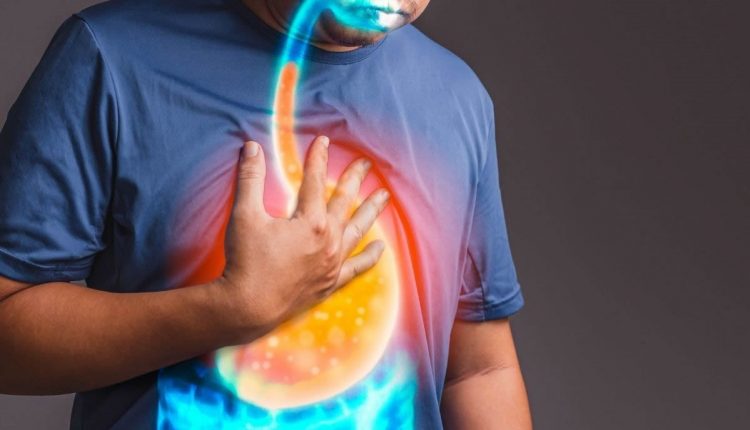
Esophageal mobility: what is the FLIP exam?
The FLIP, or EndoFLIP, is a diagnostic tool that offers accurate measurements in certain areas of the gastrointestinal system
What is FLIP (or EndoFLIP)?
It is a diagnostic tool that uses a minimally invasive probe.
This probe is essential for imaging the functional endoluminal lumen.
EndoFLIPs use a small sensory balloon that gives the doctor measurements of the esophagus and thus information for diagnosis.
Doctors often perform EndoFLIP procedures in conjunction with upper endoscopies.
An endoscopy is a procedure that examines the digestive tract.
During an endoscopy, the patient is sedated or has some type of numbing medication.
The doctor then runs a thin tube with a camera on the end down the esophagus, stomach, and small intestine to get a look at these areas.
Sometimes sedation of the patient is necessary.
The sensory balloon is filled with an ionic fluid, and is fitted with electrodes that take measurements.
EndoFLIPs are given to people with gastrointestinal problems
They can help diagnose problems such as:
- Achalasia
- Dysphagia
- Eosinophilic esophagitis
- Esophageal atresia
- Tracheoesophageal fistula
- Pathologies diagnosable with FLIP
Achalasia
Achalasia is a disorder that makes it difficult for food to pass from the esophagus to the stomach.
This is due to damaged nerves within the esophagus, eventually resulting in paralysis of the esophagus.
It’s not clear why these nerves become damaged, but researchers suspect this could happen due to a viral infection or an autoimmune response.
Symptoms of achalasia include:
- The inability to swallow
- Vomiting or regurgitation
- Stomach ache
- Chest pain
- Belching
- Pneumonia, caused by inhaling food into the lungs
- Weight loss
There is no cure for achalasia, but symptom management is possible.
Dysphagia
People with dysphagia have trouble swallowing.
Doctors often use an EndoFLIP to figure out what might be causing dysphagia since there are many potential causes.
Symptoms can include:
- Inability to swallow or pain when swallowing
- Coughing, retching or regurgitation
- Frequent heartburn or stomach acid in the throat
- Sensation of food stuck in the throat
- Hoarseness
- Hypersalivation
- Weight loss
- Eosinophilic esophagitis
Eosinophilic esophagitis is swelling or inflammation of the esophagus due to an allergic reaction.
It is often caused by an allergic reaction to food.
Symptoms of eosinophilic esophagitis include:
- Difficulty swallowing or food stuck in the throat
- Vomit
- Chest pain
- Refusal to eat, especially in young children
Esophageal atresia
Esophageal atresia is a birth defect that causes the baby’s esophagus to develop incorrectly.
There are four types of esophageal atresia:
Type A. This is when the upper and lower parts of the esophagus partially develop but do not connect. Instead, each unattached end is closed.
Type B. This is when the upper part of the esophagus is attached to the trachea, but does not connect to the lower part, which has a closed end. Type B is very rare.
Type C. This is when the lower part of the esophagus attaches to the trachea and the upper part is closed. Type C is the most common type.
Type D. This is when both the upper and lower parts of the esophagus are connected to the windpipe rather than to each other. Type D is very severe and also the rarest type of esophageal atresia.
Researchers don’t know what causes esophageal atresia. It often occurs with other birth defects, most commonly a tracheoesophageal fistula.
Tracheoesophageal fistula
In a tracheoesophageal fistula, the esophagus and windpipe are joined together rather than existing as two separate tubes, as they typically are.
This is due to an error during the development of the baby in the womb.
Early in development, the esophagus and windpipe begin as a tube.
Tracheoesophageal fistulas occur when the tubes don’t separate properly.
Unlike esophageal atresia, the symptoms of a single tracheoesophageal fistula are not always immediately apparent.
They can include coughing when feeding and frequent lung infections.
Contraindications to the FLIP test
No major complications have been reported to date.
There are small risks of bleeding related to the inherent routing of the probe, and perhaps some sore throat following the procedure.
Other side effects are related to anesthesia:
- Fatigue
- Heachache
- Muscular pain
- Nausea and vomit
- Sore throat
Read Also
Emergency Live Even More…Live: Download The New Free App Of Your Newspaper For IOS And Android
Esophageal Achalasia, The Treatment Is Endoscopic
Oesophageal Achalasia: Symptoms And How To Treat It
Eosinophilic Oesophagitis: What It Is, What The Symptoms Are And How To Treat It
Flip, The New Test For Oesophageal Motility Disorders
Gastroesophageal Reflux: Causes, Symptoms, Tests For Diagnosis And Treatment
Irritable Bowel Syndrome (IBS): A Benign Condition To Keep Under Control
Esophagogastroduodenoscopy (EGD Test): How It Is Performed
Symptoms And Remedies Of A Gastro-Oesophageal Reflux Cough
Gastro-Oesophageal Reflux Disease (GERD): Symptoms, Diagnosis And Treatment
What Is Esophagogastroduodenoscopy?
Indigestion Or Dyspepsia, What To Do? The New Guidelines
Dyspepsia: What It Is, Symptoms, Diagnosis And Treatment
Gastro-Oesophageal Reflux: Symptoms, Diagnosis And Treatment
Functional Dyspepsia: Symptoms, Tests And Treatment
Straight Leg Raise: The New Manoeuvre To Diagnose Gastro-Oesophageal Reflux Disease
Gastroenterology: Endoscopic Treatment For Gastro-Oesophageal Reflux
Oesophagitis: Symptoms, Diagnosis And Treatment



